I have often struggled with what meaningful activities one can achieve whilst on a meal break during nightwork. Being up at such late times, a meal can be last thing you want, and you find yourself with spare time.
What to do?
I have found it a wonderful chance to take a walk around the small city – Devonport Tasmania, in which I work, exploring and capturing its emptiness. In contrast to large municipal cities that never seem to sleep, my city is lady of daylight, of business hours shoppers, workers and visitors.
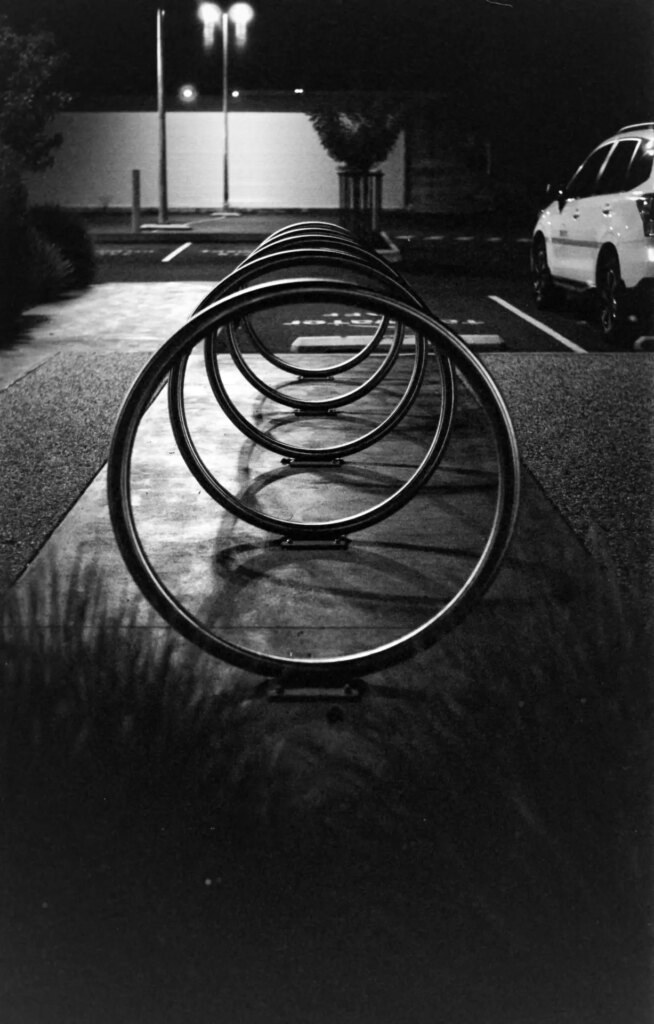
After the sun sets and the night claims the alleys, streets and coves of Devonport, she becomes devoid of the traffic of life except for the hardy few who work 24hr jobs.
After deciding that I would use my break times to exercise and take a walk around the environs of my workplace I quickly realised that this provided a wonderful opportunity to document the area on film.
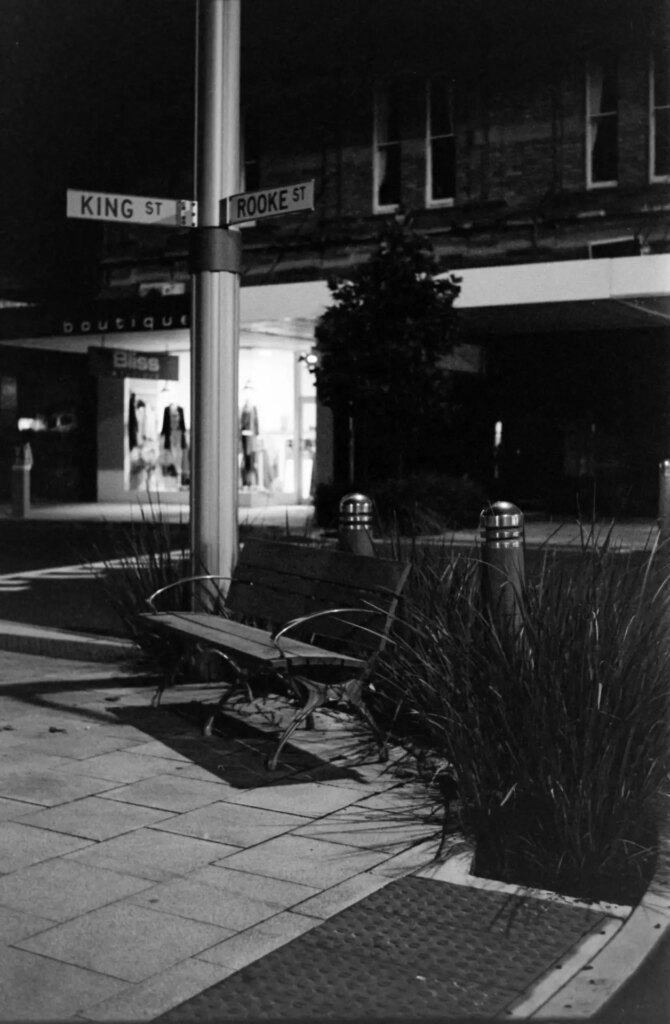
Deciding on a film stock though was problematic. I had, until now, never pushed film. A somewhat newcomer to film photography, I have concentrated on practicing shooting, home developing and scanning film as a box speed concept.
With the scant availability of high ISO film stock I had no real option other than to trying pushing film.
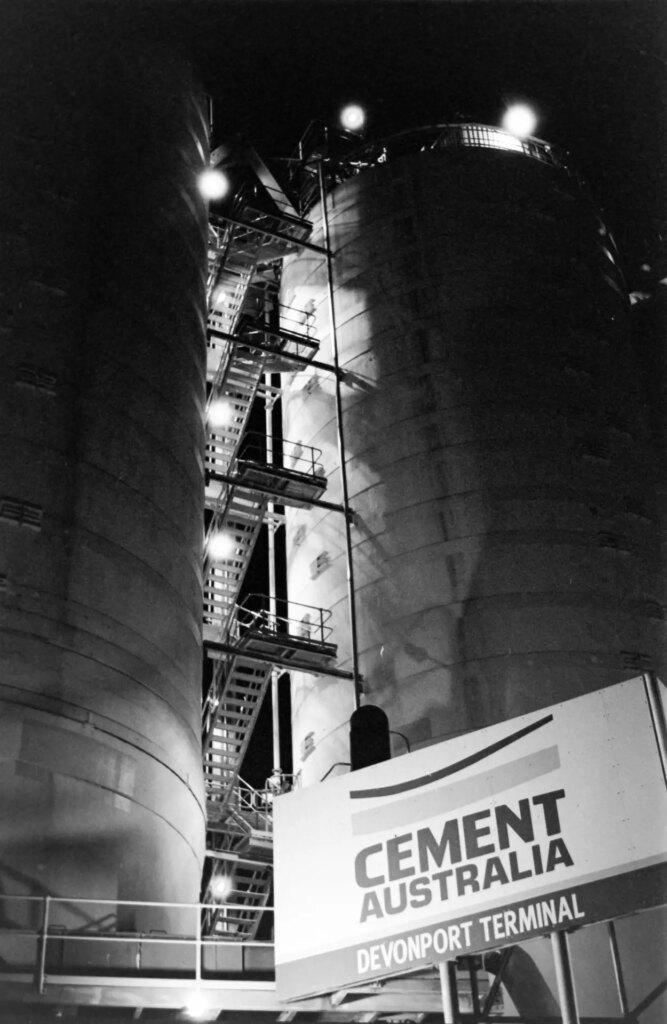
I decided to try my favourite Black and White stock, Ilford HP5+ pushed to 1600 ISO.
Now I had what film stock I would use, but alas, what camera and lens? Like most film shooters, I have been bitten at various times by GAS and have an ever-growing collection of cameras. I have many to choose from but ultimately one stood out. We all have cameras that speak to us on another level. Cameras that provide more than the actual resultant picture. Such cameras seem to plug directly into our psyche and imprint emotion into the act of taking every picture. Without hesitation I reached for my Kodak Retina IIC. Many pages have been written about these cameras, and I do admit to owning a few different models. The IIC stands out as the best for me. Mine has the wonderful Rodenstock Heligon 50mm f2.8 lens.
So, camera and film selected time to load up and explore!
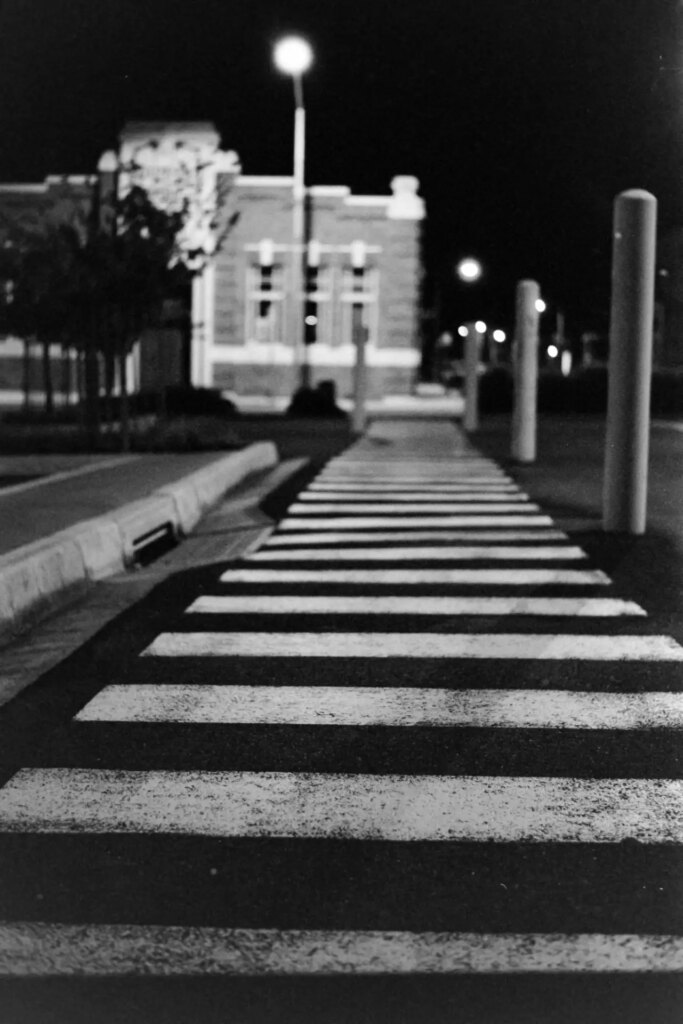
It’s amazing how different a place can feel after the sun goes down and people are no longer present. The objects, buildings and paraphernalia remain but take on a different note. Bollards become sentinels on guard, Street lighting wardens against the darkness and shop windows reflections of the eerie world around them.
Here is where HP5+ really shines. A fine flexible film stock that can repay your trust with wonderful images without fuss or demands.
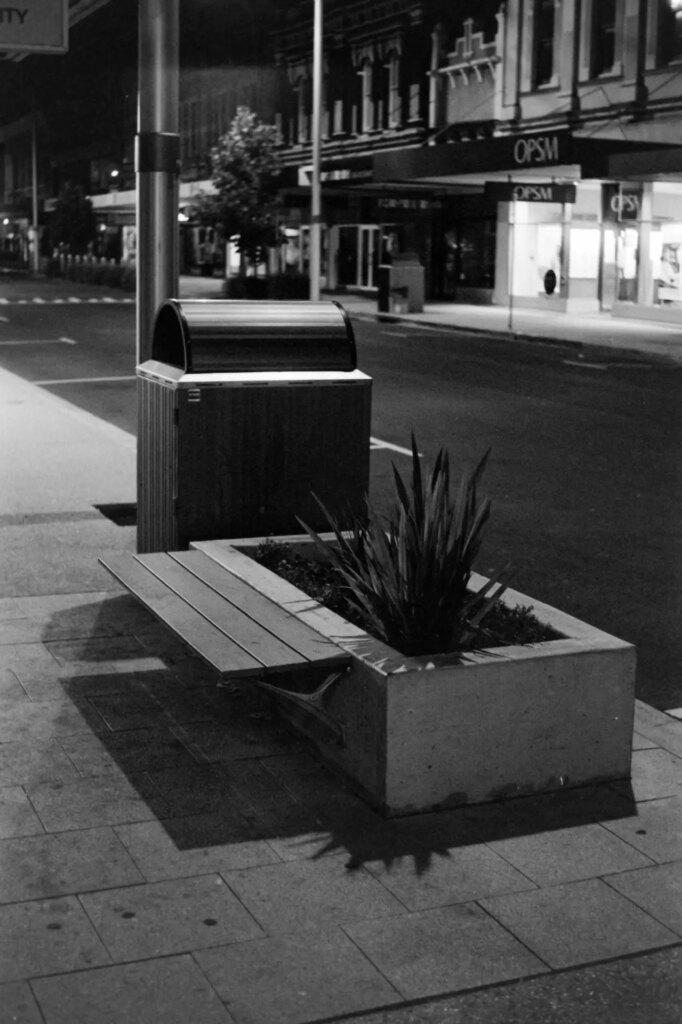
I anticipated that shooting at f2.8 and ISO 1600 would require me to do my part to control shake as low shutter speeds would be required and here is where the Retina IIC also repays your faith. The bright-line viewfinder makes focussing easy for my 50 years old eyes and the leaf shutter combined with great ergonomics makes a steady hand hold achievable.
Two walks over two nightshifts and one completed roll. I have only ever developed HP5+ in Ilford HC and that was what was used here. Times were from the Massive Dev Chart for Ilford HC (1+31) pushed 2 stops and I am more than pleased with the results.
I was hoping for inky blacks and heavy shadow play and I am happy with the results. I was surprised at the grain. Far less than I envisioned. What does the future hold? More pushing film I’m certain. Ilford HP5+ is deserving all the praise its receives and HC certainly works well. I think I’ll try 3200 next…..
Cheers
Dave
You can find me at:
https://www.instagram.com/dave1109971/
and for my farm and Highland Cow photographs:
https://www.instagram.com/grangehillfarm/ & https://www.grangehillfarm.net/
Share this post:
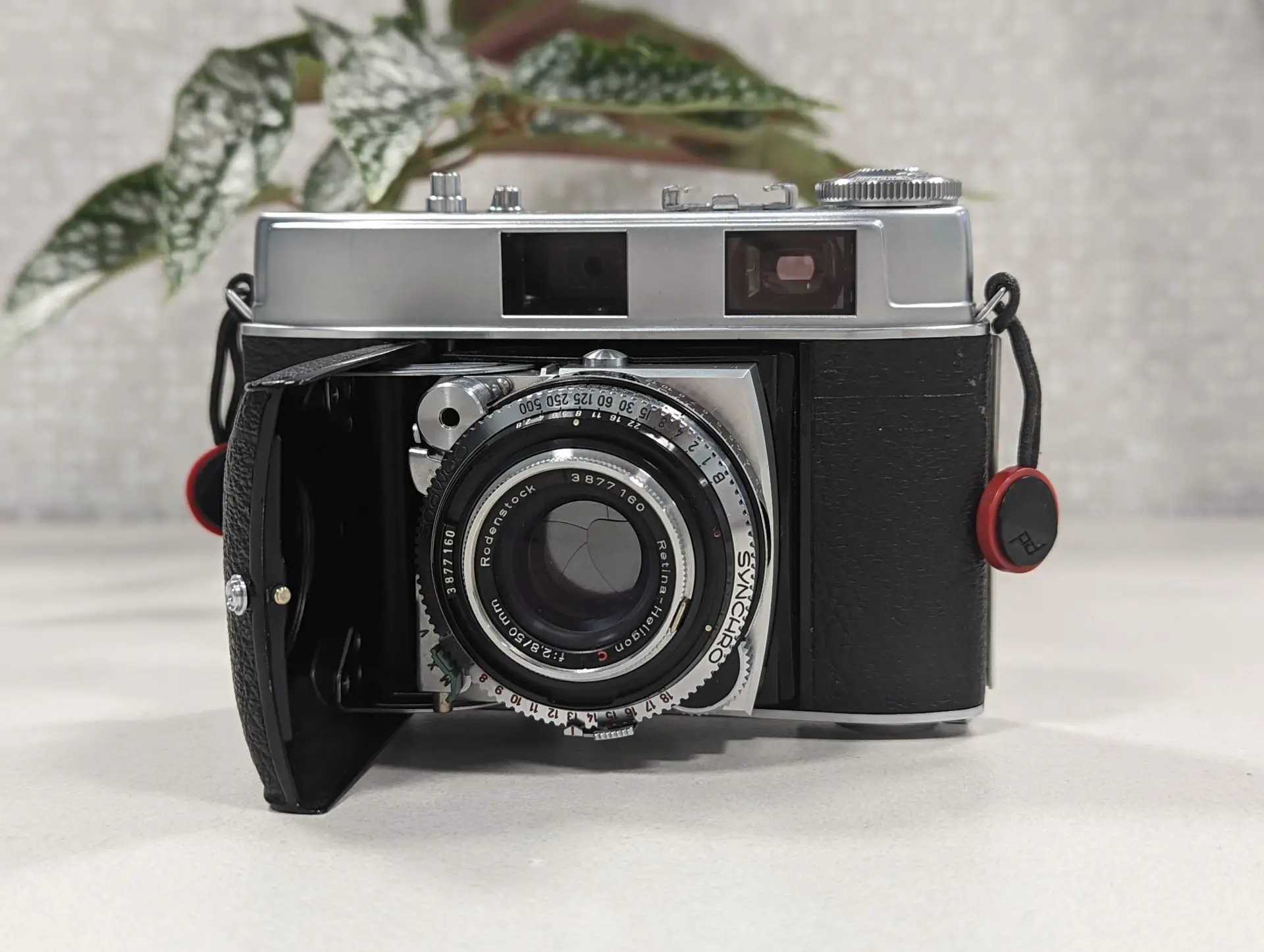








Comments
Steve Fretz on 5 Frames with the Retina IIC and HP5 at Night – By Dave Roberts
Comment posted: 25/10/2022
True Fact: A Retina was the first camera to climb Mount Everest. Hillary didn't trust Tenzing to use it properly, which is why all the summit pictures are of Tenzing. I believe it was the first model, not the II.
Comment posted: 25/10/2022
Bill Brown on 5 Frames with the Retina IIC and HP5 at Night – By Dave Roberts
Comment posted: 25/10/2022
Comment posted: 25/10/2022
Harry Machold on 5 Frames with the Retina IIC and HP5 at Night – By Dave Roberts
Comment posted: 26/10/2022
Both the Xenon an Heligon are 6-elements lenses and again for bot max. apertures the same, f 2,8 or f 2,0.
Only the front element is different, smaller aperture for f 2 and larger for f 2,8
You could try to insert an Ff2,0 front element and I did this with great success.
However, since the aperture scale only offers you an f 2,8: that is where you finally stuck with..
Interesting to see that both makers stuck with finally the same rear part for f 2,8 as for the f´2,0 and more costly variant.
Both lenses are tuck sharp and have lovely characteristics.
This system in general is dramatically underrated; which might change now over the next couple of years.
I have a few of those; also the earlier version and I enjoy using both so much.
Best regards from Baden near Vienna
Harry Machold
Comment posted: 26/10/2022
Castelli Daniel on 5 Frames with the Retina IIC and HP5 at Night – By Dave Roberts
Comment posted: 01/11/2022
Comment posted: 01/11/2022
Dave Roberts on 5 Frames with the Retina IIC and HP5 at Night – By Dave Roberts
Comment posted: 05/11/2022